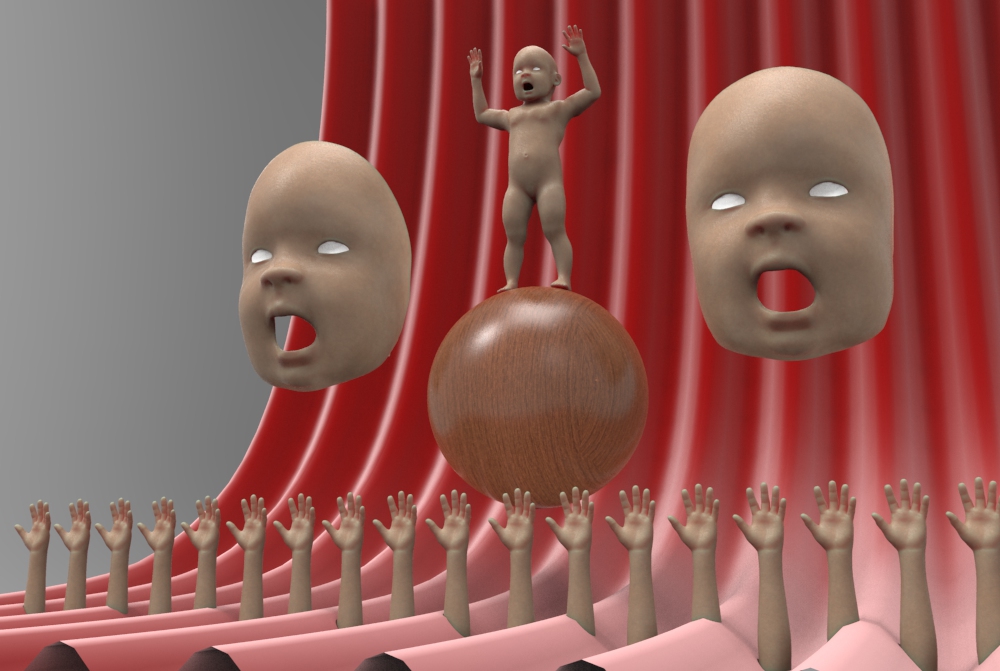
Makehuman
Basic method:
To avoid the step of adding the custom files, you can simply work with a basic male, female, or baby figure that the professor created. These figures are all saved in Blender format, so you can open them directly in that program. Note that the figures rigged with MHX are easier to pose. Access the basic figures here.
Advanced method (not recommended for students):
This free program can be used to generate a custom human figure that you can then pose in Blender. To use this program in your workflow, a few custom files have to be installed on your computer to allow MakeHuman to export in the correct format and allow Blender to import–the installation of the custom files is outlined on this site: https://thomasmakehuman.wordpress.com/mhx2-documentation/
Once the custom files are installed, do the following to create a custom human figure:
Go to the start bar and launch Makehuman
Use the program to customize a human figure
When finished, click: files > export > and select Blender exchange (mhx) format
Enter a file name and click the export button
Blender
- Go to the start bar and launch Blender
- Right click on the startup cube and delete
- If importing from Makehuman, go to file > user preferences > addons > and under import/export, click to activate Makehuman imports, then close user preferences
- Go to file > import > mhx > and locate the file you exported from Makehuman (On my machine, exported files go to documents > makehuman > export) Select your file > click the import MHX button at the top right
- After you’ve done this, your figure should be loaded
- The controls in Blender are much different than in Rhino. Here are the most important controls:
- Orbit with middle mouse button
- Pan with middle mouse button and shift
- Zoom by rolling middle mouse button
- Select with right mouse button
- Zoom selected by pressing the . button on the numberpad
- 5 toggles orthographic viewing mode
- 1,2,3,4,6,7,8,9 will show front, right, top views, etc.
- To pose:
- Right click on a pose handle
- Once a handle is selected, press G to translate
- Press Z, X, or Y to constrain movement
- With a handle selected, press R to rotate
- *Notice that translations and rotations are impacted by your point of view. Compare the results you get when looking from the front, side, top, etc.
- Move to new location and press left mouse button to apply
- Undo with CTRL Z
- More information on moving in Blender can be found here: https://docs.blender.org/manual/en/dev/editors/3dview/object/editing/transform/basics.html?highlight=transformations
- To export:
- First, save as a blender file in case you need to return to the file later.
- Next, go to file > export > OBJ
- Helpful links:
- Working with MakeHuman and Blender: https://www.youtube.com/watch?v=kPYbdnPwHuQ
In Rhino
- File > Import
- Mesh can be point-edited by pressing F10, but since meshes are difficult to edit, this is only really effective for deleting unwanted body parts.
- To further edit the figure it is best to use Meshmixer. Remember that Meshmixer will only import triangulated meshes. In Rhino, select the figure and run the “triangulatemesh” command before exporting to Meshmixer.